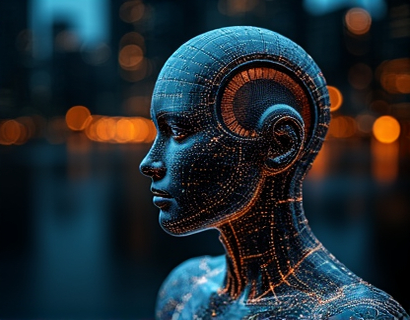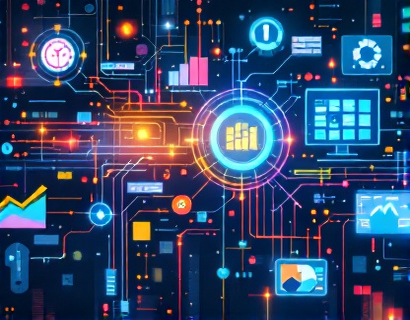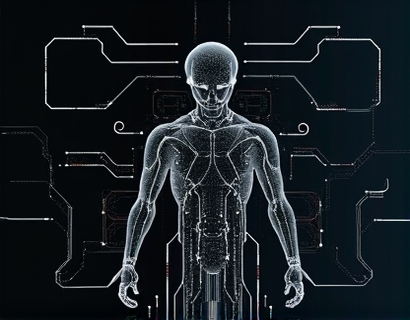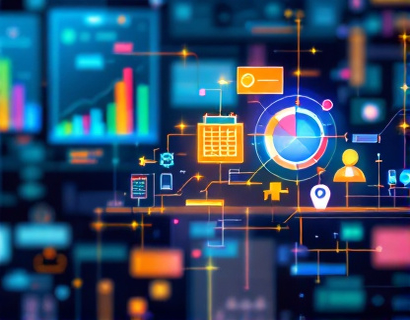AI and Crypto: Catalysts for Next-Gen Digital Transformation and Enhanced User Experiences
The intersection of artificial intelligence (AI) and cryptocurrency is paving the way for a new era of digital transformation, one that promises to revolutionize how we interact with technology and each other. This synergy is not just a technological curiosity but a powerful force driving innovation and enhancing user experiences across various sectors. As we delve into this topic, it's essential to understand the fundamental roles that AI and cryptocurrency play individually and how their integration can lead to groundbreaking solutions.
Understanding AI and Its Role in Digital Transformation
Artificial intelligence, a subset of computer science, focuses on creating systems that can perform tasks requiring human intelligence, such as learning, reasoning, and self-correction. AI's impact on digital transformation is profound, as it enables businesses to automate processes, gain insights from vast amounts of data, and create personalized experiences for users. Machine learning, a key component of AI, allows systems to improve their performance over time without being explicitly programmed. This adaptability is crucial in a rapidly changing digital landscape.
In the context of digital transformation, AI serves as a catalyst by optimizing operations, enhancing decision-making, and fostering innovation. For instance, AI-driven analytics can help companies predict market trends, optimize supply chains, and improve customer service. Chatbots and virtual assistants powered by AI provide 24/7 support, reducing response times and increasing customer satisfaction. Moreover, AI can enhance cybersecurity by detecting and mitigating threats in real-time, ensuring the integrity and security of digital systems.
Exploring the World of Cryptocurrency
Cryptocurrency, on the other hand, is a digital or virtual currency that uses cryptography for security and operates on a decentralized network, typically a blockchain. The most well-known cryptocurrency is Bitcoin, but there are thousands of others, each with unique features and use cases. Cryptocurrencies offer several advantages over traditional fiat currencies, including decentralization, transparency, and security. These properties make them an attractive option for transactions that require trust and reliability without the need for intermediaries.
The blockchain technology underlying cryptocurrencies is particularly noteworthy. It is a distributed ledger that records transactions across multiple computers in such a way that the registered transactions cannot be altered retroactively. This immutability ensures transparency and trust, making it ideal for various applications beyond currency, such as supply chain management, voting systems, and identity verification.
Synergy Between AI and Cryptocurrency
The true power of AI and cryptocurrency emerges when they are combined. This synergy can lead to innovative solutions that enhance user experiences and drive digital transformation. One of the primary areas where AI and cryptocurrency intersect is in the realm of decentralized finance (DeFi). DeFi platforms leverage blockchain technology to create financial services that are open, transparent, and accessible to anyone with an internet connection. AI can enhance DeFi by providing advanced analytics, risk assessment, and automated trading strategies, making these platforms more efficient and user-friendly.
Another area of convergence is in identity verification and management. Traditional identity systems are often centralized and vulnerable to breaches. By combining AI with blockchain, it's possible to create decentralized identity solutions that give users control over their personal data while ensuring security and privacy. AI algorithms can analyze patterns and behaviors to verify identities, reducing the risk of fraud and enhancing user trust.
Enhancing User Experiences Through AI and Crypto
One of the most significant benefits of integrating AI and cryptocurrency is the potential to create highly personalized and secure user experiences. AI can analyze user data to provide tailored recommendations, content, and services, making interactions more relevant and engaging. In the context of cryptocurrency, AI can help users manage their digital assets more effectively by predicting market trends, optimizing portfolios, and automating transactions.
For example, AI-powered wallet applications can offer real-time insights into cryptocurrency performance, alert users to potential opportunities, and even execute trades based on predefined criteria. This level of automation not only saves time but also reduces the emotional bias that can affect investment decisions. Additionally, AI-driven customer support in crypto platforms can provide instant assistance, answering queries and resolving issues efficiently, thereby enhancing user satisfaction.
Security and Trust in AI-Crypto Ecosystems
Security is a paramount concern in both AI and cryptocurrency domains. The integration of these technologies can lead to more robust security measures. AI can detect anomalies and potential threats in blockchain networks, helping to prevent fraud and cyberattacks. Conversely, the transparency and immutability of blockchain can enhance the trustworthiness of AI systems by providing a secure and verifiable record of data and transactions.
Moreover, the use of smart contracts, self-executing contracts with the terms directly written into code, can automate and enforce agreements in a trustless environment. AI can optimize the creation and execution of smart contracts, ensuring they are efficient, secure, and compliant with regulatory requirements. This combination not only enhances security but also streamlines processes, reducing costs and increasing efficiency.
Innovative Applications of AI and Crypto
The potential applications of AI and cryptocurrency are vast and varied. In the healthcare sector, AI can analyze medical data stored on a blockchain to provide accurate diagnoses and personalized treatment plans. This integration ensures data privacy while leveraging the computational power of AI for advanced analytics. In the realm of supply chain management, AI can optimize logistics and inventory management, while blockchain ensures transparency and traceability of products from origin to destination.
In the creative industry, AI-generated content combined with cryptocurrency-based marketplaces can revolutionize how artists and creators monetize their work. Platforms can use AI to curate and recommend content to users, while cryptocurrency ensures fair compensation and ownership rights. This synergy not only enhances the creative process but also provides a more equitable and transparent ecosystem.
Challenges and Considerations
While the integration of AI and cryptocurrency offers numerous benefits, it also comes with challenges that need to be addressed. One of the primary concerns is regulatory compliance. The crypto space is still largely unregulated, and the use of AI adds another layer of complexity. Ensuring that these technologies comply with existing laws and regulations is crucial to avoid legal issues and maintain user trust.
Another challenge is the technical integration itself. Combining AI with blockchain requires sophisticated infrastructure and expertise. Developers must ensure that systems are scalable, efficient, and secure. Additionally, there is the issue of user adoption. Educating users about the benefits and functionalities of AI-crypto solutions is essential for widespread acceptance and usage.
Future Prospects and Conclusion
As AI and cryptocurrency continue to evolve, their integration is poised to play a pivotal role in the next generation of digital transformation. The potential for enhanced user experiences, increased security, and innovative applications is immense. For tech innovators and crypto enthusiasts, embracing this synergy can open up new opportunities and drive meaningful impact in various industries.
In conclusion, the convergence of AI and cryptocurrency is not just a technological trend but a fundamental shift in how we approach digital solutions. By leveraging the strengths of both fields, we can create more intelligent, secure, and user-centric systems that shape the future of technology and beyond.











































